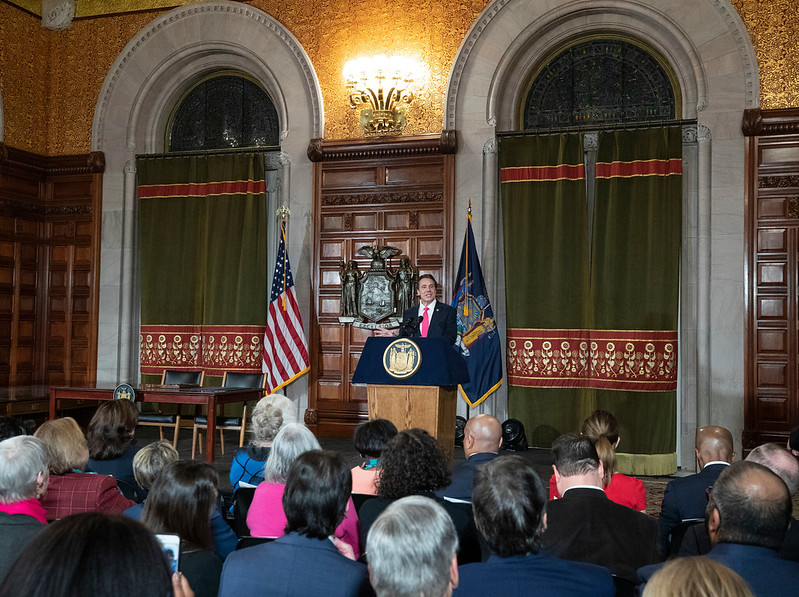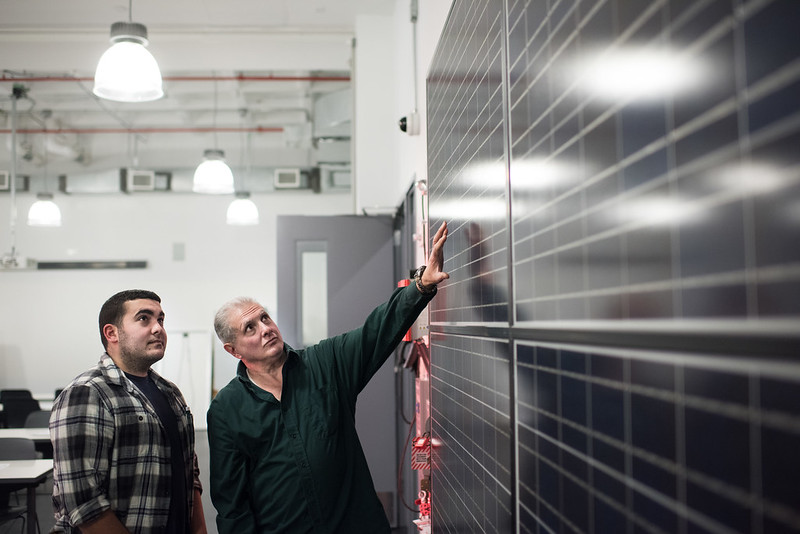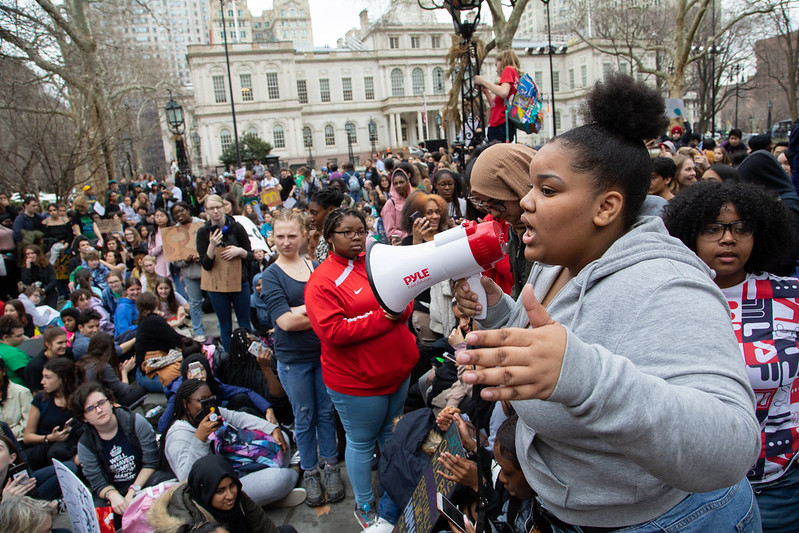What New York Can - and Must - Do Right Now to Help End the Addiction Crisis

(photo: Mike Groll/Governor's Office)
When your medical career is bookended by two of the worst public health emergencies in modern American history – the heroin epidemic of the 1970s and our country’s current crisis of overdose and addiction – it gives you a unique perspective on the problem and the solutions.
To overcome this deadly crisis we must begin by viewing addiction for what it is – a treatable disease – and then bring to scale evidence-based medical strategies that we know give patients the best chance for a positive outcome.
Medication Assisted Treatment – or MAT – is the quickest, easiest-to-start weapon we have to prevent patients from exposure to possible overdose. In combination with counseling as needed, it is the most effective tool we have to combat the opioid epidemic.
MAT involves prescribing medication approved by the Federal Drug Administration to treat opioid dependence. The medications reduce cravings and withdrawal and support patients who are recovering from illicit opioid use. Patients respond differently to the dose, formulation, and delivery method given their histories and prior experiences, as agreed upon with their physician. In my experience, MAT coupled with regular counseling and medical supervision is the best chance patients have for success.
New York is poised to become the latest to join a growing list of states – politically blue, red, and purple – that are removing obstacles to MAT and instead rightly focusing on patient care and access. On-demand access to all FDA-approved medications for opioid dependence is the national trend because it is smart public health policy. California, Ohio, Texas, and Missouri are just some of the states to embrace the wisdom of MAT and pass laws or regulations to increase access and availability.
New York’s bi-partisan legislation removes burdensome and potentially deadly barriers to treatment like prior authorizations and covers the medicine under both private insurance and Medicaid. Enacting these reforms now requires Governor Andrew Cuomo’s signature.
At Damian Family Care Centers, in our various clinics in New York City and hard-hit Upstate New York, we regularly witness the difficulties involved when a patient has to wait for MAT because the insurance company or Medicaid requires prior authorization. Patients who are struggling with opioid dependence often have challenges with impulse control as part of their addiction. It is essential that the medications prescribed for the patient are available to the patient as soon as possible. Otherwise the patient will not tolerate the wait and will turn to the streets. And the streets are more dangerous than ever because of the proliferation of fentanyl, which is exponentially more powerful than prescription opioids or heroin. When fentanyl becomes part of the equation, a “regular” dose can easily become a lethal dose.
Any delay, let alone 24 to 48 hours or more, can make the difference between life and death for a patient who agrees to Medication Assisted Treatment.
The bottom line is we are in the midst of a raging opioid epidemic. If people were dying from an infectious illness, would we think it was ethical to require prior authorization for any of the possible medications? Would it be effective to limit the medicines we know can help? The doctors, nurse practitioners, and physician’s assistants on the front lines of the crisis must be able to make medical judgments in the best interests of their patients. That requires the ability to prescribe all the medications the FDA has approved for the treatment of opioid dependence.
Nearly 4,000 people died in New York State from drug overdoses in the last year, including one every six hours in New York City.
The barriers to treatment – while well-intended – were built during a different time under vastly different circumstances. The most meaningful action New York State, and all states, can take right now regarding the opioid, heroin, and fentanyl crisis is to ensure MAT is readily available to the thousands of people who need it.
***
Sonia Lopez, MD, is the Director of Addiction Medicine at Damian Family Care Centers.
***
Have an op-ed idea or submission for Gotham Gazette? Email This email address is being protected from spambots. You need JavaScript enabled to view it.
National Grid Saga Highlights Need for Public Power

(photo: Michael Appleton/Mayor's Office)
For six months, National Grid has held New Yorkers’ gas hostage in an attempt to force through an environmentally-disastrous pipeline that those same New Yorkers fiercely oppose. Last week, Governor Cuomo finally pushed back against National Grid, in a letter threatening to revoke the company’s license to operate downstate. Considering that National Grid has stranded 1,100 households without gas in the freezing winter under false pretenses, it’s a necessary first step.
But if the next step is to give that license to another private corporation, Cuomo will only be handing the keys from one con artist to another.
Currently, our utility system—the means through which our energy is delivered from generators to users—is controlled by Investor Owned Utilities (IOUs). These are private corporations whose primary goal is to make as much money for their shareholders and executives as possible, at their customers’ expense and instead of funding necessary infrastructure improvements and the just transition to green energy.
The real story behind National Grid’s so-called “gas moratorium” illustrates its priorities perfectly. In May, the company claimed that it had to stop hooking up new gas connections, leaving businesses unable to operate and residents unable to heat their homes, because of a gas shortage that could only be remedied, they say, by the construction of the Williams Pipeline.
It’s a compelling story, save for one small inaccuracy: there is no gas shortage. Report after report show that gas demand is flat, and would actually decrease were National Grid to follow sufficient energy efficiency measures. The company’s own regulatory filings show that even after adding 12,000 more customers than predicted in 2017, gas use was 35% lower than expected. They’ve even been selling surplus gas to third parties for the last five years—hardly the actions of a company about to run out.
They are, however, the actions of a company trying to make money. And the Williams Pipeline would make National Grid a lot of money.
While the so-called “gas moratorium” is a particularly egregious example of how private utilities prioritize profits over people, National Grid is just doing what all Investor Owned Utilities are designed to do: generate profits. It’s not an exception, it’s the rule. A glance at New York City’s other major IOU, Con Edison, confirms this.
When massive blackouts shook the city earlier this year, ConEd came under fire for its failure to repair ailing infrastructure until it had literally burst into flames. One of ConEd’s many justifications for a 2013 rate hike was a $350 million program to modernize old relay systems, including the West 65 Street substation whose failure left over 72,000 people without power on July 13. ConEd got the rate hike and we got higher bills, but despite making around a billion dollars a year in profits, they never funded the relay repair project, and never made the repairs.
ConEd won’t reveal where that $350 million went, and is actually requesting another rate hike this year. We have some idea where that money went, as they are still able to pay $9.5 million a year to CEO John McCavoy, six figure retainers to each of its board members, and $846 million in shareholder dividends.
Stronger regulations can’t change the fundamental incompatibility between private profit and public need. The only solution is to wrest power from multimillionaire shareholders and put it in the hands of the public. This is the goal of Public Power NYC, and a central plank of the Movement for a Green New Deal coalition: to replace these IOUs with a Public Utility that prioritizes people over profits.
As Western Queens City Council Member Costa Constantinides wrote last week, more than 2,000 communities in the United States, including the entire state of Nebraska, get their power from publicly-controlled utilities, providing power to one in seven Americans. These public utilities have already been proven to be cheaper and more reliable than privately-owned utilities and have been leading the charge in the transition to renewable energy our planet needs to survive.
Constantinides is one of a rising number of elected officials who support bringing utilities under public ownership and, as chair of the Council’s environmental protection committee, his voice carries some additional weight in New York City. However, the change we need can only come when our representatives in Albany wake up to the failure of the status quo.
State Senator Kevin Parker and Assembly Member Michael Cusick, as the chairs of their respective state committees on energy policy, have the opportunity to fix the fundamental flaws of our investor-owned system, and we call on them to lead on bringing our utilities under public control.
To be sure, no public utility is perfect, and existing public utilities must go further to combat climate change. But the difference between private and public utilities is that they can go further, because they can be truly democratic and accountable to the people they serve.
We only have to look at the incredible aid work in the face of disaster by groups like Occupy Sandy to see what democratic control could look like. When the storm hit, it was ordinary people who came together, ultimately setting up an extensive relief network that provided thousands of meals and delivered vital supplies. They didn’t run the numbers to make sure it was profitable, demand payment in return, or blame storm victims for their circumstances. They just came together, pooled their resources and skills, and helped each other survive.
Imagine if this community solidarity could be harnessed before disaster strikes, and used to shape systems with the same values that made those relief efforts possible. A truly democratic and accountable public utility will make decisions in, and only in, the public interest. It will prioritize safety, reliability, and affordability. It will decarbonize as quickly and comprehensively as the planet requires. And it will do this all with union workers making good wages and full benefits, with provisions to hire from—and invest in—the marginalized communities who have been hurt most by the last century of private, polluting energy regimes.
This is what Public Power makes possible, and why it will be a vital part of any Green New Deal—be it for New York, the United States, or the world. The engines of private profit have been driving our energy system for decades, and they’ve nearly run our planet off a cliff. They need to be replaced with the engines of public good, powered not by thirst for private profit but by the desire to meet our communities’ needs in the best and most sustainable ways possible.
***
Charlie Heller is a member of the New York City Democratic Socialists of America, Ecosocialist Working Group; Jamie Tyberg is a member of New York Communities for Change; and Alex Beauchamp is a member of Food & Water Action. On Twitter @NYCDSA_Climate, @jtbrg, and @AlexAtFWW.
***
Have an op-ed idea or submission for Gotham Gazette? Email This email address is being protected from spambots. You need JavaScript enabled to view it.
New York Needs to Make Young Voters a Priority - Here’s How

(photo: Paige Polk/Mayoral Photography Office)
2018 was an historic year for youth voter turnout across the country. Just not in New York. Nationwide, 31% of young voters (ages 18-29) made it to the polls. In New York, that number was about 16.4%, the second-worst in the nation in states for which we have data. New York’s young voters are not more apathetic than other states; instead, we have an election system that does not facilitate our participation, and in fact suppresses it.
Our organization, Generation Vote, works to empower young people across the state to participate in the political process and make their voices heard. We hear stories from young people on the ground who tell us that opportunities to register to vote are limited, registration deadlines are restrictive, and closed party primaries restrict new voters from participating in such elections. They also cite policy decisions made at the local level, such as poll sites placed in locations away from both college campuses and public transit, which place further obstacles to youth participation.
Young people are forced to enter the electoral process at a time when their lives are highly transient and unstable, when the process to vote is often most complicated, and before they have had a chance to develop a habit of participation. Next year, voters between the ages of 18-29 will make up 40% of the voting-age population. Our generation, which is the most diverse in our country’s history, will live with the decisions made today and tomorrow for the rest of this century and needs to have a say in that future.
New York has the potential to empower young voters for next year’s crucial elections and beyond.
We need to make youth voting rights and engagement a renewed priority for reform in New York State. This will require a two-pronged approach: one is removing statutory barriers to youth voting in New York, and the other is creating avenues for authentically engaging youth voices in the political process.
There is an array of possible reforms suggested by youth voting experts at the Center for Information and Research on Civic Learning and Engagement (CIRCLE) at Tufts University and the Fair Elections Center. These include automatic voter registration, lowering the voting age to 16, codifying the re-enfranchisement of people on parole, and mandating on-campus poll sites.
These reforms will remove barriers to accessing the polls for young people, opening up the process to new voters. They should form the basis of a new pro-youth voting reform package taken up by Governor Cuomo and State Legislature at the start of the next legislative session in January.
Thankfully some key pieces are already in motion in New York, such as pre-registration for 16- and 17-year-olds; same-day registration, which is likely to appear on the ballot for New York voters in 2021; and a bill that would require SUNY and CUNY college campuses to expand their voter registration practices, which awaits the governor’s signature to become law.
We also have to build a culture of participation and engagement that authentically brings young voices into the process. Steps including the creation of a youth delegation to state government, embedding standardized civic education into our schools, and lowering the age requirement to be a poll worker to 16. Building a culture of engagement will make voting a part of a wider civic experience, and create a healthier democracy.
With 2020 around the corner, the stakes have never been higher for New York to make it simpler, not harder, for young voters to make their voices heard. At Generation Vote, we’ve already hit the ground running with the first New York Youth Voting Rights and Engagement Summit, which took place on November 9.
We’re bringing together young people from across the state to build on our work as part of the Let NY Vote Coalition by creating a new agenda for youth voting rights in New York State. If you want to help us build a democracy which authentically includes young people, visit our website and find us on social media, then get in touch and involved.
***
Garrett Shor, COO, and Brianna Cea, CEO, are co-founders of Generation Vote. On Twitter @GenVoteUS.
***
Have an op-ed idea or submission for Gotham Gazette? Email This email address is being protected from spambots. You need JavaScript enabled to view it.




